A Modern Dresser Combining Shelving with Drawers
This dresser has everything – a sleek, modern look with plenty of storage. The DIY plans to build a Monroe Dresser features a shelving cabinet on each side and eight drawers in the middle. This is the ultimate piece for a space where too many furniture pieces would clutter an area – this one will keep everything nicely hidden!
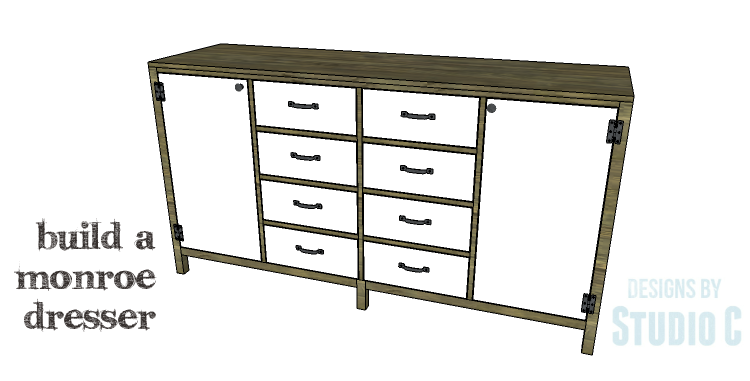
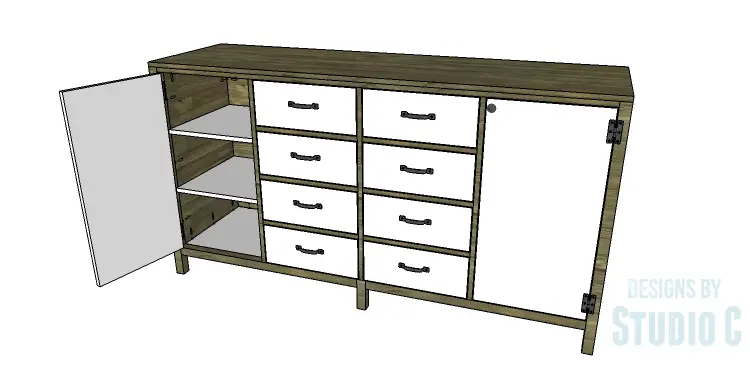
Materials:
- 1-1/4″ pocket hole screws (<– affiliate link!)
- 2-1/2″ pocket hole screws
- 1-1/4″ brad nails
- Edge banding, optional (<– affiliate link!)
- 8 sets of 18″ Drawer slides
- 2 sets of hinges
- Cabinet pulls
- Wood glue
- Sandpaper (100, 150, 220 grits)
- Finishing supplies (primer & paint, or stain, sealer)
Lumber:
- 4 – 1×2 at 8′
- 5 – 2×2 at 8′
- 3 – 4′ x 8′ sheets of 3/4″ plywood
Cut List:
- 4 – 2×2 at 37-1/2″ – Legs
- 2 – 1×2 at 18″ – Side Framing
- 2 – 2×2 at 18″ – Side Framing
- 2 – 3/4″ plywood at 18″ x 31-1/4″ – Side Panels
- 2 – 1×2 at 69″ – Upper Stretchers
- 4 – 2×2 at 33-3/4″ – Lower Stretchers
- 2 – 2×2 at 5-1/2″ – Center Legs
- 1 – 3/4″ plywood at 31-1/4″ – 69″ – Back Panel
- 1 – 3/4″ plywood at 18″ x 69″ – Bottom
- 3 – 3/4″ plywood at 19-1/2″ x 32″ – Cabinet Dividers
- 6 – 1×2 at 16-7/8″ – Drawer Dividers
- 4 – 3/4″ plywood at 16-1/2″ x 18-1/2″ – Shelves
- 1 – 3/4″ plywood at 21″ x 72″ – Top
- 8 – 3/4″ plywood at 14-3/8″ x 16-1/2″ – Drawer Box Bottoms
- 16 – 3/4″ plywood at 6″ x 16-1/2″ – Drawer Box Sides
- 16 – 3/4″ plywood at 6″ x 15-7/8″ – Drawer Box Front & Back
- 8 – 3/4″ plywood at 7″ x 16-5/8″ – Drawer Fronts
- 2 – 3/4″ plywood at 16-1/4″ x 31″ – Doors
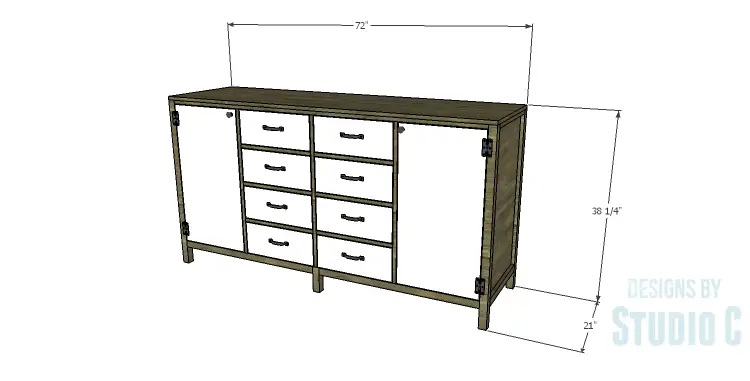
Click on the drawings for a larger view!
Step One
Edge banding will be applied to the exposed edges of the plywood prior to assembly.
Cut the pieces for the legs, the side framing, and the side panels. With the pocket hole jig set for 1-1/2″ material, drill pocket holes in each end of the 2×2 framing pieces. Secure the 2×2 pieces to the legs using glue and 2-1/2″ pocket hole screws.
Set the pocket hole jig for 3/4″ material and drill pocket holes in each end of the 1×2 framing pieces. Secure the 1×2 pieces to the legs using glue and 1-1/4″ pocket hole screws. Orient the pocket holes so they face up and will be hidden by the top.
Drill pocket holes in all four edges of the panels. Secure the panel to the legs and framing pieces using glue and 1-1/4″ pocket hole screws. The inside face of the panels will be flush with the inside faces of the framing and legs.
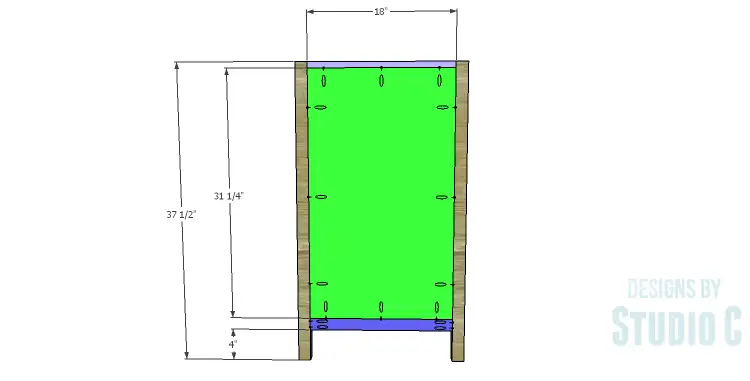
Step Two
Cut the pieces for the upper stretchers, lower stretchers, the center legs, and the back. Set the pocket hole jig for 1-1/2″ material and drill pocket holes in each end of the 2×2 lower stretchers. Secure the 2×2 pieces to the center legs using glue and 2-1/2″ pocket hole screws. Secure one of these assemblies to the legs using glue and 2-1/2″ pocket hole screws.
Set the pocket hole jig for 3/4″ material and drill pocket holes in each end of the 1×2 upper stretchers. Secure the one of the 1×2 pieces to the legs using glue and 1-1/4″ pocket hole screws. Orient the pocket holes so they face up and will be hidden by the top.
Drill pocket holes in all four edges of the back panel. Secure the panel to the legs and framing pieces using glue and 1-1/4″ pocket hole screws. The inside face of the panels will be flush with the inside faces of the framing and legs.
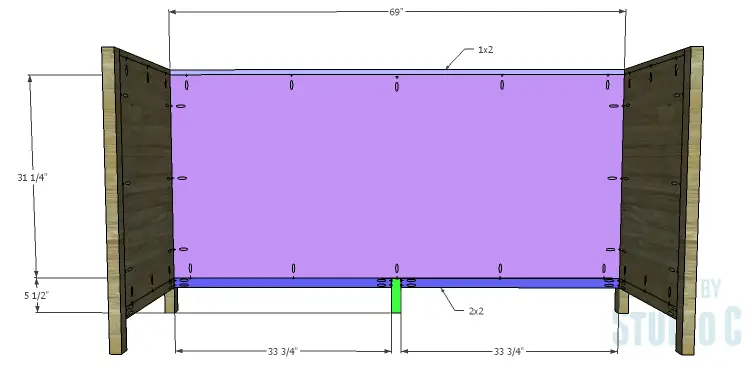
Step Three
Secure the remaining 2×2 and center leg assembly to the front legs using glue and 2-1/2″ pocket hole screws.
Secure the remaining 1×2 upper stretcher to the front legs using glue and 1-1/4″ pocket hole screws.
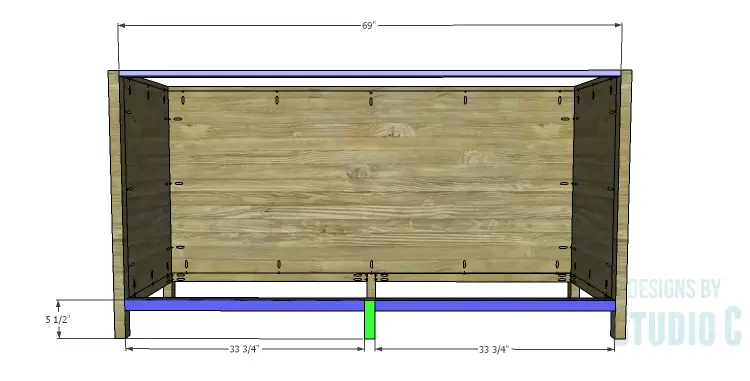
Step Four
Cut the piece for the bottom and drill pocket holes in all four edges. Secure the bottom piece to the lower stretchers using glue and 1-1/4″ pocket hole screws. The top face of the bottom panel will be flush with the top face of the lower stretchers.
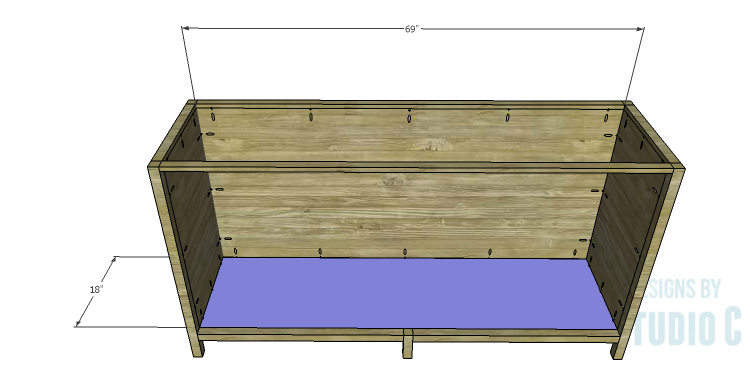
Step Five
Cut the pieces for the cabinet dividers, and cut the notch using a jigsaw. A portable jig may be used to drill the pocket hole in the notch. Secure the dividers in the cabinet as shown using glue and 1-1/4″ pocket hole screws.
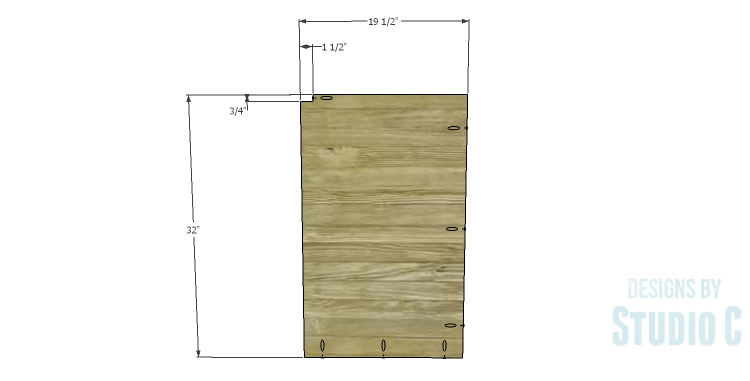

Step Six
Cut the pieces for the drawer dividers and drill pocket holes in each end. Secure the drawer dividers to the cabinet dividers using glue and 1-1/4″ pocket hole screws.
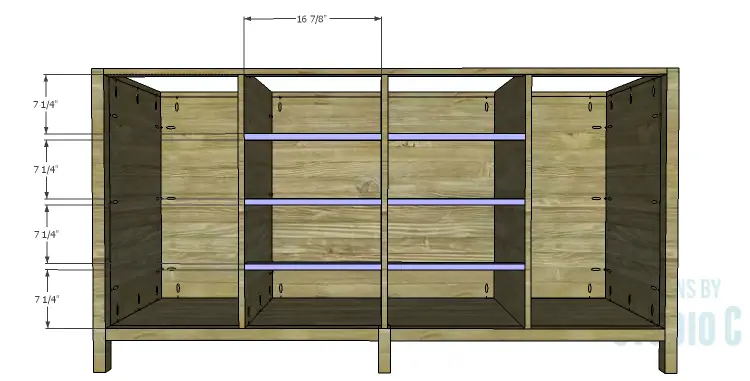
Step Seven
Cut the pieces for the shelves. Drill pocket holes in the side edges and the back edge of the shelves. Position the shelves in the cabinet as shown, securing in place using glue and 1-1/4″ pocket hole screws. The shelves will be located 1″ back from the front face of the legs.
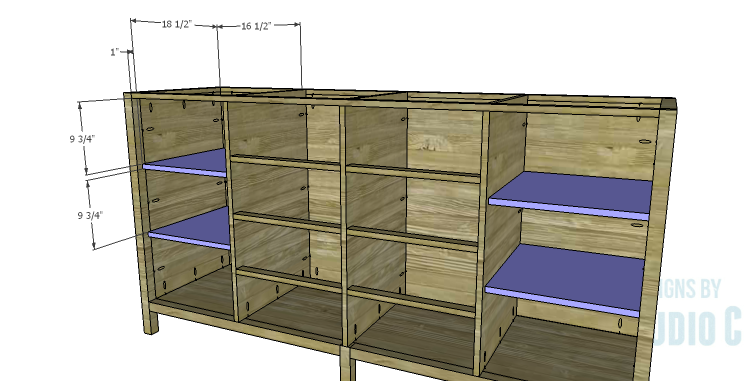
Step Eight
Cut the piece for the top. Secure the top in place using glue and 1-1/4″ brad nails.
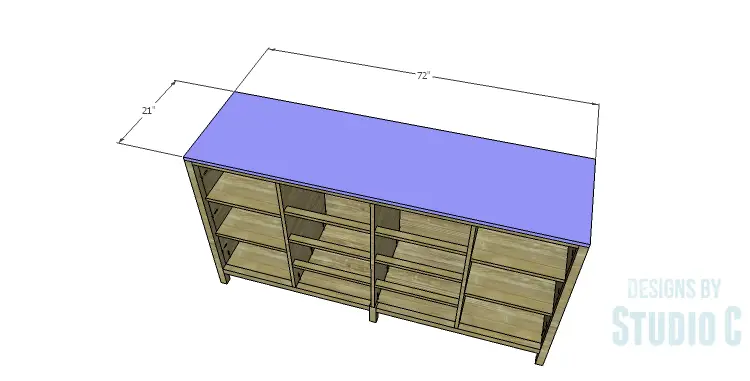
Step Nine
Cut the pieces for the drawer boxes. Drill pocket holes in all four edges of the bottom as well as each end of the sides. Assemble the drawer boxes as shown using glue and 1-1/4” pocket hole screws. Install the drawer slides according to the manufacturer’s installation instructions, locating them ¾” back from the front edge of the dividers. Refer to this easy tutorial on installing drawer slides. Make any necessary adjustments.
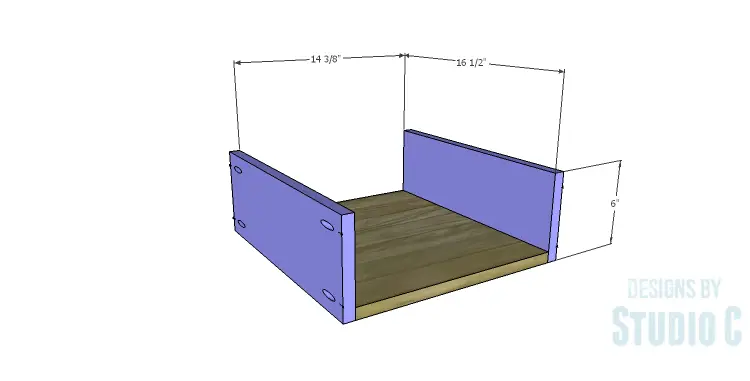
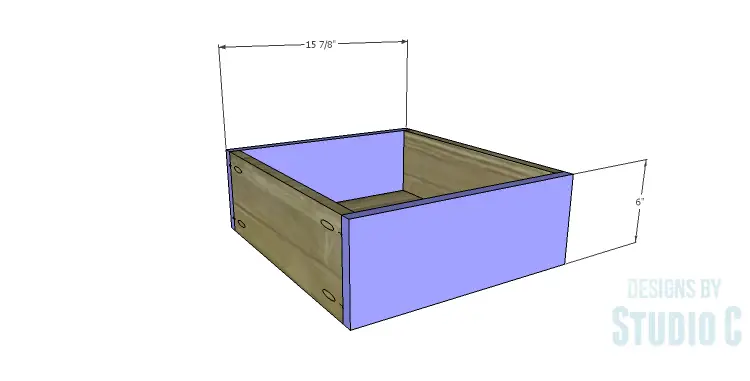
Step Ten
Cut the pieces for the drawer fronts. Mark the position for the drawer pulls and drill the holes. Shim the drawer front in the opening – there will be a 1/8” gap around all sides – then drive screws through the holes for the drawer pulls into the drawer box. Open the drawer, and secure the drawer front using countersunk 1-1/4” screws from the inside. Remove the screws from the holes for the drawer pull then finish drilling the holes. Install the drawer pull. Check out this easy tutorial on installing drawer fronts for guidance.
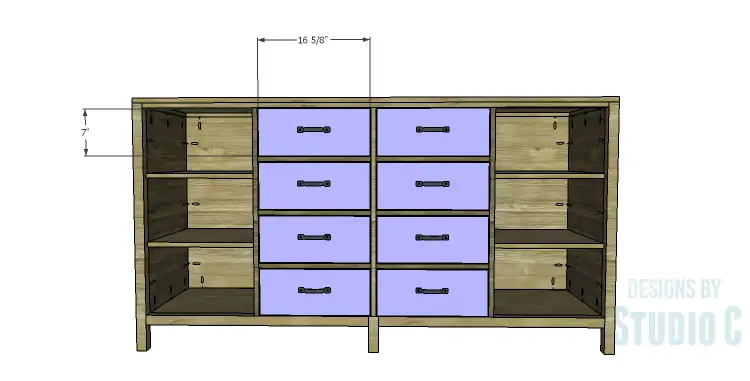
Step Eleven
Cut the pieces for the doors. There will be a 1/8″ gap around all sides of the doors in the openings. Install the hinges on the doors, then install the doors in the openings. Install the magnetic catches to keep the doors closed, the install the cabinet pulls.

Finish as desired.
This cabinet does not have to be used as a dresser… The piece would make an excellent media stand, a fabulous console, or even a place to store linens and toiletries in a large bathroom! Have any questions about the DIY plans to build a Monroe Dresser? Leave a comment below!
Originally posted 2015-01-27 08:26:33.



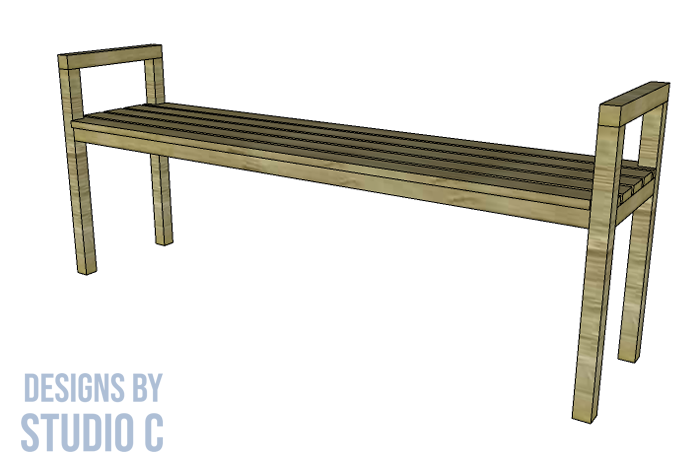

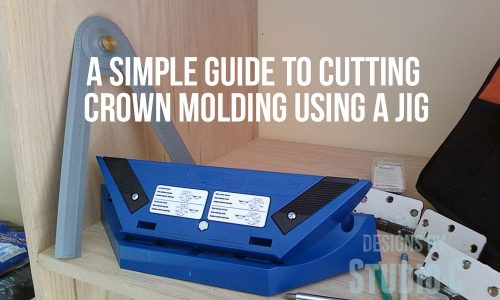
3 Comments
This is a very cool project. Your instructions are very detailed!
Thank you very much! I try to make it as easy as possible – anyone can do it! I appreciate you stopping by!